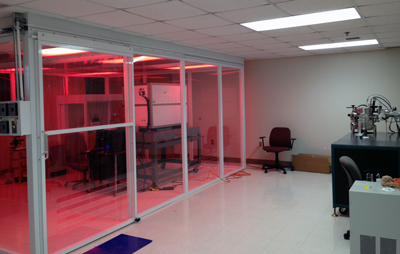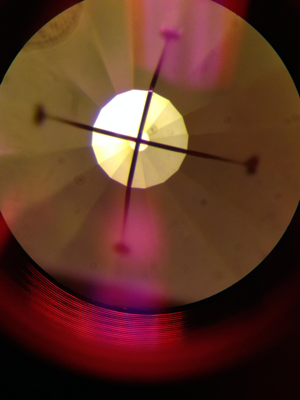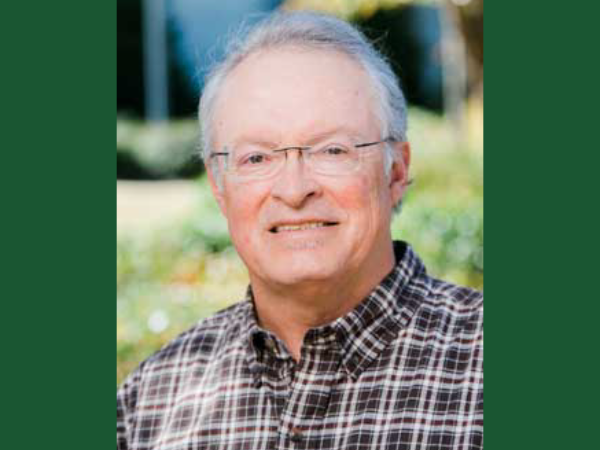 Cleanrooms, common in manufacturing and scientific research, are environments with a controlled level of contamination that is specified by the number of particles equal to and greater than 0.5mm as measured in one cubic foot of air. The cleanroom in the CNMB is classified at 7000, a high rating required for fabricating micro-sensors on diamonds, which is the nature of the work being done in Physics. According to Dr. Yogesh Vohra, Professor of Physics and Associate Dean in the College, the level can be upgraded at a future date as the Center expands its capabilities.
Cleanrooms, common in manufacturing and scientific research, are environments with a controlled level of contamination that is specified by the number of particles equal to and greater than 0.5mm as measured in one cubic foot of air. The cleanroom in the CNMB is classified at 7000, a high rating required for fabricating micro-sensors on diamonds, which is the nature of the work being done in Physics. According to Dr. Yogesh Vohra, Professor of Physics and Associate Dean in the College, the level can be upgraded at a future date as the Center expands its capabilities.While they vary in size and complexity, all cleanrooms use a High Efficiency Particulate Air (HEPA) filter to trap particles that are 0.3 micron and larger in size. In addition, those working in cleanrooms, including the new one in Physics, must be thoroughly trained to ensure the environment remains free of contaminants. The scientists will enter and exit the cleanroom through a special prep room and will wear special clothing designed to trap contaminants that are naturally generated by skin and the body.
 Vohra notes that in addition to the room itself, the Center will be using the first-ever electrical micro-circuit fabricated on top of diamond by mask-less lithography.
Vohra notes that in addition to the room itself, the Center will be using the first-ever electrical micro-circuit fabricated on top of diamond by mask-less lithography. "Our new technology is 3D micro-fabrication of electrical circuits on diamonds, without using any prefabricated masks," Vohra explains. "This is referred to as 'mask-less lithography,' and uses micro-mirrors to direct light to expose the photoresist to draw circuits on top of diamonds. We also encapsulate the micro-circuit in chemical vapor deposited in a single crystal diamond layer to protect the circuit from any environmental degradation and exposure."
Vohra adds that immediate application for the sensors is in high-pressure "diamond anvil cell devices," although he notes that "we are also exploring applications in other extreme environments, like deep well drilling and monitoring in extreme high temperatures."


